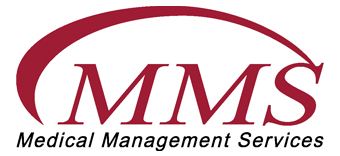No Surprises Act Starts in 2022
Surprise medical bills arise when insured consumers inadvertently receive care from out-of-network hospitals, doctors, or other providers they did not choose.
Peterson-KFF and other studies find this happens in about 1 in 5 emergency room visits. In addition, between 9% and 16% of in-network hospitalizations for non-emergency care include surprise bills from out-of-network providers (such as anesthesiologists) whom the patient did not choose.
Specialties, such as anesthesiology, where hospital patients get little say in who treats them, have long been a sore point. “You don’t even know the name of your doctor until the bill comes,” says Karen Pollitz, senior fellow at the Kaiser Family Foundation, a nonprofit that studies health policy. As of 2022, insurers must treat these out-of-network services as if they were in-network on a patient’s bill. Providers and facilities can be fined up to $10,000 per violation.
Specialties, such as anesthesiology, where hospital patients get little say in who treats them, have long been a sore point
Surprise Medical Bills Generally Have Two Components
The first component is the higher amount the patient owes under her health plan, reflecting the difference in cost-sharing levels between in-network and out-of-network services. For example, a preferred provider health plan (PPO) might require a patient to pay 20% of allowed charges for in-network services and 40% of allowed charges for out-of-network services. In an HMO or other closed-network plan, the out-of-network service might not be covered at all.
The second component of surprise medical bills is an additional amount the physician or other provider may bill the patient directly, a practice known as “balance billing.” Typically, health plans negotiate discounted charges with network providers and require them to accept the negotiated fee as payment-in-full. Network providers are prohibited from billing plan enrollees the difference (or balance) between the allowed charge and the full charge. Out-of-network providers, however, have no such contractual obligation. As a result, patients can be liable for the balance bill in addition to any applicable out-of-network cost sharing.
New federal protections apply to most surprise bills
Protections will apply to most surprise bills for specific types of services provided in certain settings.
Emergency Services – Surprise billing protections apply to most emergency services, including those provided in hospital emergency rooms, freestanding emergency departments, and urgent care centers that are licensed to provide emergency care. The federal law also applies to air ambulance transportation (emergency and non-emergency), but not ground ambulance. Emergency care includes screening and stabilizing treatment sought by patients who believe they are experiencing a medical emergency or active labor.
The federal government estimates there are 39.7 million emergency visits annually by patients with private job-based or individually purchased insurance, and of these 18% (or about 7.1 million visits) will involve at least one out-of-network claim.
Post-emergency stabilization services – The NSA defines emergency services to also include post-stabilization services provided in a hospital following an emergency visit. Post-stabilization care is considered emergency care until a physician determines the patient can travel safely to another in-network facility using non-medical transport, that such a facility is available and will accept the transfer, and that the transfer will not cause the patient other unreasonable burdens. The NSA also requires patients must receive written notice and give written consent to be transferred.6 The federal government estimates each year 4.1 million emergency department visits result in a hospital admission, and that 16% (or about 660,000) of these admissions will involve at least one out-of-network claim.
Non-emergency services provided at in-network facilities – Finally, the NSA covers non-emergency services provided by out-of-network providers at in-network hospitals and other facilities. Often, the doctors who work in hospitals don’t work for the hospital; instead they bill independently and do not necessarily participate in the same health plan networks. The federal government estimates that 16% of 11.1 million (or about 1.8 million) in-network non-emergency facility stays for privately insured patients each year involve at least one out-of-network claim.
The regulation broadly defines covered non-emergency services to include treatment, equipment and devices, telemedicine services, imaging and lab services, and preoperative and postoperative services, regardless of whether those services are provided within the facility itself.
“The cost-sharing and reimbursement provisions require providers to interact with payors regarding out-of-network charges,” Harvey L. Rochman of Manatt says. “These requirements will require workflow changes particularly in states where there are no balance billing laws or the state balance billing provisions provide limited protection.”
Hospitals and practitioners, should be developing a game plan to efficiently seek compensation through the IDR process and maximize their results.
“Although the new rule does not include the IDR process aspects, the detailed information regarding setting the detailed information regarding calculation of the Qualifying Payment Amount (QPA) will help revenue cycle leaders prepare for the IDR process because the QPA, which is generally the median in-network contract rate for the item or service, will be one factor considered by the arbitrators in determining the amount that should be paid to providers for out of network services covered by the NSA.” Rochman says.
Preparing now will ensure revenue cycles are ready for major changes coming January 1st, which provider organizations will be subject to whether the second IFC comes sooner or right before the compliance deadline as scheduled.
MMS is comprised of a team of certified and enthusiastic professionals…
with over 30 years of experience in the medical billing industry, information technology, and business consulting.
When you need assistance managing your Revenue Cycle, contact Mark Manning of Medical Management Services at 706.315.4660.







